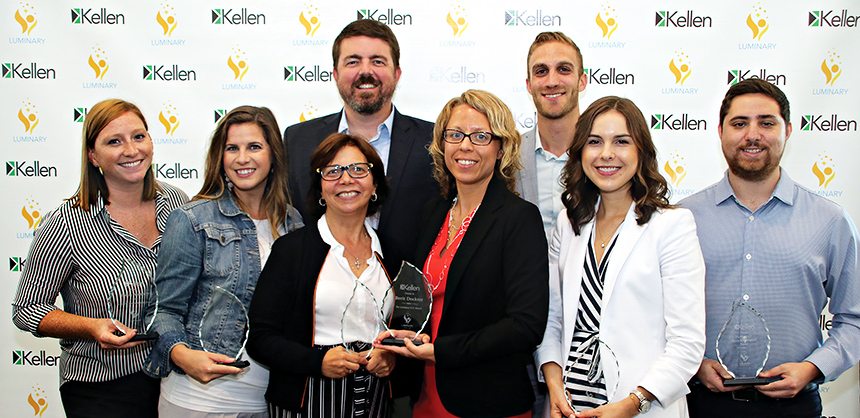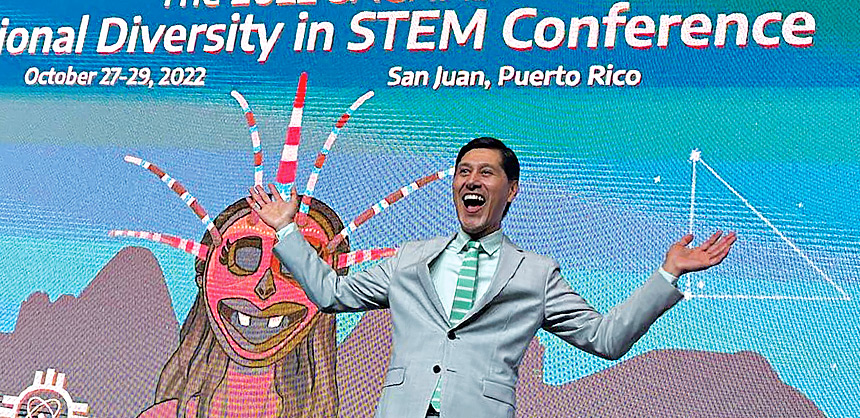Opening DoorsMarch 17, 2023
A Certified Association Executive Credential Will Take You to the Next Level By Christine LoomisOpening Doors
A Certified Association Executive Credential Will Take You to the Next Level
While some organizations vet executive directors to ascertain whether they have or are pursuing CAE certification, having the certification is not required in many organizations. Courtesy of Meredith Taylor
Much is written about the CMP certification for planners. But what about the Certified Association Executive credential (CAE) for association executives? It, too, requires a combination of education, work experience and rigorous testing. Those association executives who hold the certification are recognized as having attained a high level of professional achievement that puts them in an excellent position to get the executive jobs they want, to pursue advancement in their field and to potentially make more money doing it. Association industry leaders are unanimous on that.
“Earning the Certified Association Executive credential shows that association professionals are committed to their profession and lifelong association management learning,” says Jamar Wright, CAE, director, credentialing, the American Society of Association Executives (ASAE), headquartered in Washington, DC. “Association professionals pursue the CAE credential for career advancement, potential pay increase, professional development and to show their dedication to the industry.”
That said, while some organizations vet executive directors to ascertain whether they have or are pursuing CAE certification, having the certification is not required in many organizations.
Moreover, there are multiple paths to achieving the certification. Wright says the process will vary from candidate to candidate. That said, he continues, all those seeking CAE certification must complete 100 hours of broad-based, association management-related professional development within five years of the month in which they submit their application.
“There are a variety of ways in which a candidate may obtain the necessary professional development,” he says. “It may come from conferences, workshops, college courses, preplanned study groups, self-paced education and/or mentoring/coaching. We do not require candidates to take specific courses to qualify to sit for the exam; however, a candidate’s professional development must fall within the CAE exam content outline and professional development guidelines.”
There’s also required work experience before one can even apply to take the CAE exam. “Candidates,’ Wright says, “must have five years of experience as an employee at the staff level or one year employed as a chief staff executive or C-suite-level executive at a qualifying organization.” A qualifying organization is a nonprofit — trade association, professional society, individual membership organization, philanthropic organization, tribal organization — or an association management company (AMC).
Wright says he doesn’t know of any colleges or universities that have created courses specifically tied to the CAE exam content outline, but he notes that many of the general management courses can meet the CAE professional development requirements.
Wright himself is a good example of how CAE certification can help association executives. “Since earning the CAE credential, I have received a promotion and a pay increase,” he says. He sees the reasons for an association staffer or executive to pursue CAE certification as very straightforward. “If you are looking for career advancement, a potential income increase and a better knowledge base of the association management field, you should pursue the CAE certification.”
Chicago-based Meredith Taylor, CAE, MNM, vice president at Kellen, an association management company, was inspired to pursue CAE certification by her father. “My dad earned his CAE years ago and was so proud of his accomplishment that it inspired me when I followed in his footsteps in association management. He was one of those executive directors who came from the industry. He worked in demolition and then managed the National Demolition Association, so he really valued the CAE programming as he learned how to run an association as his second career,” Taylor says.
Taylor says obtaining CAE certification has made a significant difference in her career. “Learning the material and studying for the test forced me to learn about types of associations and activities that I don’t work with in my day job. There were several topics that just hadn’t come up in my career yet, like budgeting for capital expenditures and how to develop a knowledge management system. Those new ideas pushed me out of my comfort zone. They also gave me confidence as I moved around to different types of associations.”

Juan Amador, FASAE, CAE, pursued his credential as a personal commitment to leadership and professional development as an association executive. Courtesy of Juan Amador
Taylor earned a masters in nonprofit management from DePaul University and was able to apply many of the hours from her degree coursework to the CAE professional development requirements. “I also enjoyed online programming from ASAE, AM&P and NYSAE,” she adds.
There are many types of places across the country that offer the exam. Taylor took the route of participating in a study group with Association Forum in Chicago and took the exam there.
Like Wright, Taylor believes pursuing CAE certification is one way to show commitment to the industry. “It’s also a way to expand your knowledge. My advice would be to get the education hours and the test done before you have kids because it’s not easy. I can’t imagine trying to study for it now that I have two toddlers. I’m glad I tackled that goal before they arrived,” she says. “But, it’s never too late.”
Elizabeth Twitchell, manager, credentialing, ASAE, was inspired by her colleagues to pursue the CAE. “The very first job I had in Washington, DC was at a small association, where every director-level employee either had a CAE or was in the process of earning the designation. I was able to watch several people study and pass the exam. I wanted to do that.”
She says the certification has opened many doors over the years and continues to serve as a differentiator between her and other individuals in the field. Throughout the process of meeting the education and professional development requirements, Twitchell says she learned two important things. “First, there’s a great beauty in a structured program designed for people in association management. This is a career field that I wound up in by accident; being able to learn more about how associations worked was vital. Second, volunteer leaders are among the greatest strengths of an organization, and how you interact with them professionally, legally and personally makes a huge difference in the ability to meet the mission of the organization.”
Twitchell encourages those in the association management field to apply for certification. “You have nothing to lose but your time. If you’re making your career in association management, it’s good to explore all of the relevant domains,” she says. “Membership, education, event planning, finance, volunteer management and advocacy are all hugely important but can be siloed. The CAE is a way to take education and study across organizational silos and put together the full picture of how a membership organization is run. If you decide that the CAE is not for you, or you’re not ready to take an exam at this time, you will have still learned a lot from the process.”
The CAE program was founded by ASAE in 1960. It’s governed by the CAE Commission, an independent certifying body. The commission awards the Certified Association Executive credential and is also responsible for setting the rules and policies related to the CAE program. Virginia-based Diana Tucker, CAE, vice president for membership and chapter relations with NAIOP, the Commercial Real Estate Development Association, is the current chair of the CAE Commission. She earned her CAE 16 years ago.
Tucker says she pursued the CAE certification in part because she’s perpetually motivated to learn. Additionally, she says, “I wanted to increase my knowledge and improve my performance and the certification is a key component of this lifelong journey. I felt it demonstrated my commitment not only to my professional development, but also to the association management profession.”
Tucker sees the credential as a component in kickstarting a deeper level of engagement with the association community. “It added another dimension to my service to the field through my long involvement in both the CAE Program and among component relations practitioners. The knowledge I gained through the process of earning and retaining my credential also elevates my confidence in my competencies in association management and leadership to handle so many scenarios.”
The CAE credential, Tucker says to anyone considering pursuing certification, is not just a designation. “Enjoy the journey of learning and the community of like-minded professionals seeking to expand your scopes of knowledge and perspectives to help you perform at your best. It is a terrific investment in yourself.”
Juan Amador, FASAE, CAE, is executive director of the Society for Advancement of Chicanos/Hispanics and Native Americans in Science (SACNAS), headquartered in Santa Cruz, CA. He’s also chair elect of the CAE Commission. He has had his CAE credential for nine years, pursuing it as a “personal commitment to leadership and professional development as an association executive. The CAE credential,” he says, “helped me enhance my individual performance and professional goals.” He adds that he makes sure to keep up with the required educational credits for renewal as required by the CAE Commission.
Amador is already deeply involved in strategic goals at the CAE Commission as well as at the association of which he’s executive director. “As the current CAE Commission chair elect, I’m guiding the strategic direction to set the professional standards required for the credential. And as an association executive, I amplify the achievements of association management professionals to benefit the current and future workforce that helps create a more diverse, equitable and inclusive association industry.”
To association executives who may be deciding whether or not to pursue the CAE credential, Amador is unequivocal. “Pursue! Obtaining your CAE is a continuous learning journey — from studying to passing the exam to renewal. At every milestone, be ready to learn and apply the gained knowledge to advance your yourself, your career and your organization.”
Although there are many paths forward, the steps that must be taken to ultimately receive the CAE credential are very specific. Fortunately, ASAE has extensive guidance on its website (asaecenter.org/programs/cae-certification). It lists a six-step process from start to finish. AC&F








